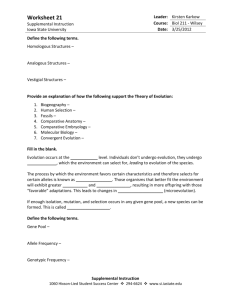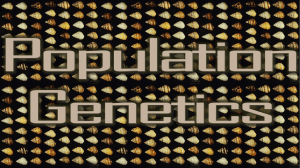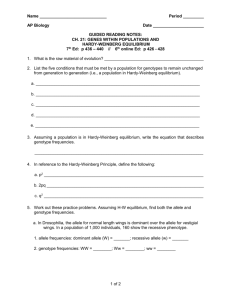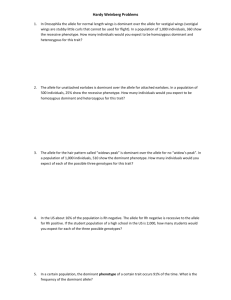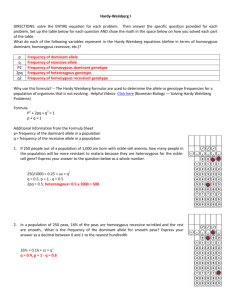Hardy-Weinberg Equilibrium Problems Instructions Solve the
advertisement
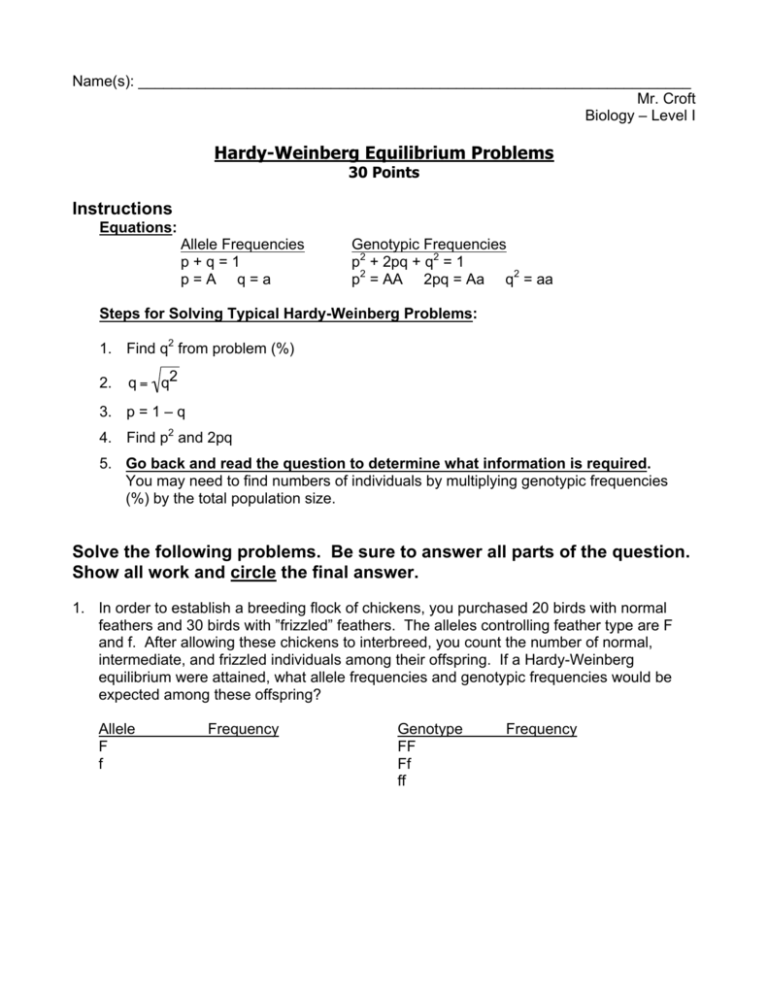
Name(s): __________________________________________________________________ Mr. Croft Biology – Level I Hardy-Weinberg Equilibrium Problems 30 Points Instructions Equations: Allele Frequencies p+q=1 p=A q=a Genotypic Frequencies p2 + 2pq + q2 = 1 p2 = AA 2pq = Aa q2 = aa Steps for Solving Typical Hardy-Weinberg Problems: 1. Find q2 from problem (%) 2. q = q2 3. p = 1 – q € 4. Find p2 and 2pq 5. Go back and read the question to determine what information is required. You may need to find numbers of individuals by multiplying genotypic frequencies (%) by the total population size. Solve the following problems. Be sure to answer all parts of the question. Show all work and circle the final answer. 1. In order to establish a breeding flock of chickens, you purchased 20 birds with normal feathers and 30 birds with ”frizzled” feathers. The alleles controlling feather type are F and f. After allowing these chickens to interbreed, you count the number of normal, intermediate, and frizzled individuals among their offspring. If a Hardy-Weinberg equilibrium were attained, what allele frequencies and genotypic frequencies would be expected among these offspring? Allele F f Frequency Genotype FF Ff ff Frequency 2. Phenylketonuria is inherited as an autosomal recessive. About 1 in every 10,000 newborn Caucasian infants is affected by this condition. If this population is in HardyWeinberg equilibrium, what percentage of the population are carriers (heterozygotes)? 3. The allele for curly hair is dominant over the allele for straight hair. In a population of 2,500 individuals, 20% show the recessive phenotype. How many individuals would you expect to be homozygous dominant and heterozygous for this trait? 4. The allele for freckles is dominant over the allele for no freckles. In a population of 350 individuals, 70 show the dominant phenotype. How many individuals would you expect of each of the possible three genotypes for this trait? 5. In a certain population, the dominant phenotype of a certain trait occurs 66% of the time. What is the frequency of the dominant allele?




